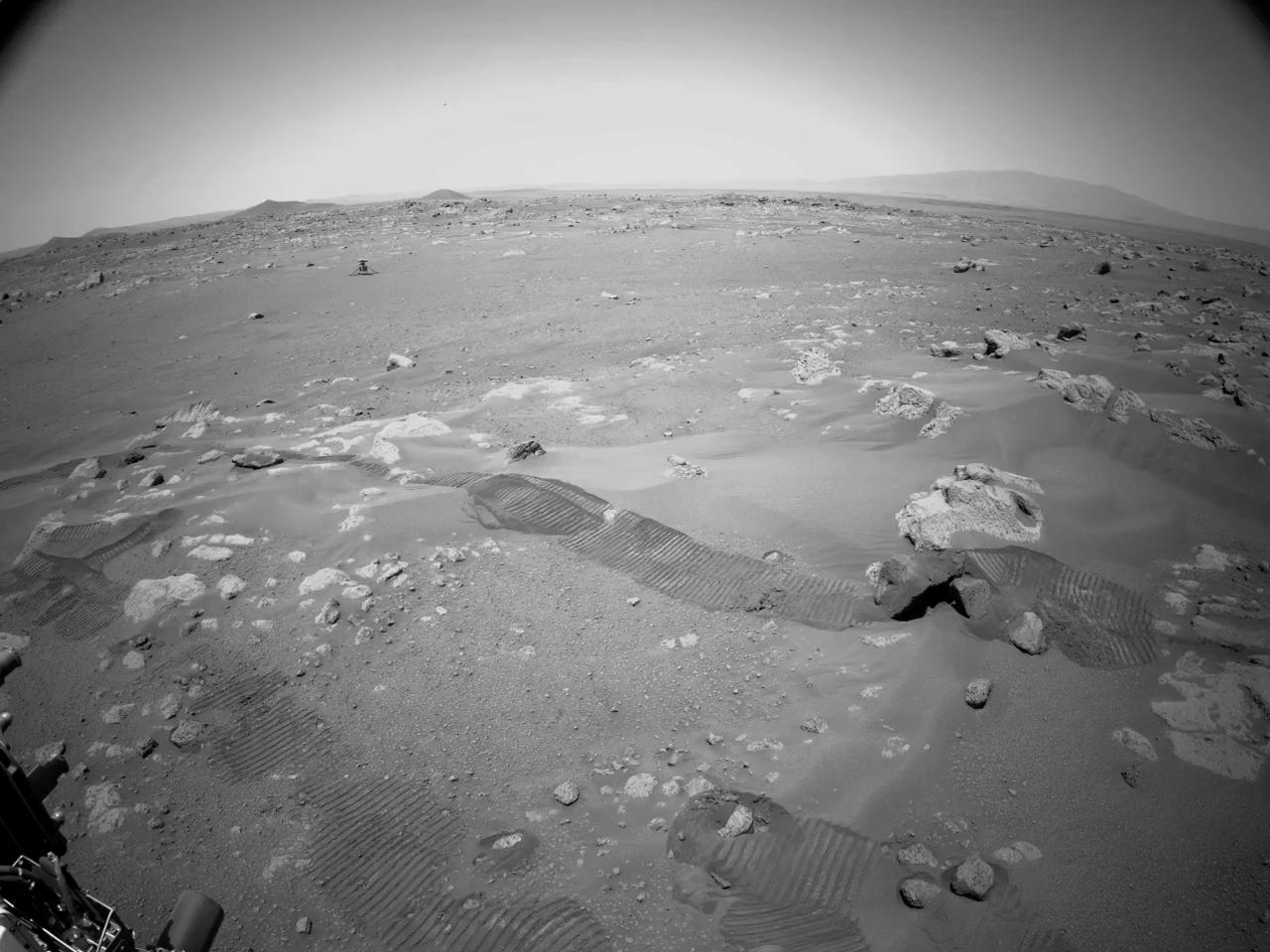
|
Perseverance Rover Camera View of Long Autonomous Drive
- Click the image above for a larger view
- Full-Res JPEG (1280 x 960) (137.9 kB)
- Full-Res TIFF (1280 x 960) (1.2 MB)
Caption:
This video from July 1, 2021 (the 130th sol, or Martian day, of its mission), shows scenes from the longest autonomous drive yet for NASA's Perseverance Mars rover, which landed on Feb. 18, 2021. At the beginning of the traverse on Sol 130, the rover's engineers manually drove past NASA's Ingenuity Mars Helicopter. Then the rover began driving autonomously, avoiding hazards and traveling 358 feet (109 meters) on its own.
One of the rover's Navigation Cameras took the images about once every 16 feet (5 meters). They were processed to enhance the contrast.
Background Info:
A key objective for Perseverance's mission on Mars is astrobiology , including the search for signs of ancient microbial life. The rover will characterize the planet's geology and past climate, pave the way for human exploration of the Red Planet, and be the first mission to collect and cache Martian rock and regolith (broken rock and dust).
The Mars 2020 Perseverance mission is part of NASA's Moon to Mars exploration approach, which includes Artemis missions to the Moon that will help prepare for human exploration of the Red Planet.
Subsequent NASA missions, in cooperation with ESA (European Space Agency), would send spacecraft to Mars to collect these sealed samples from the surface and return them to Earth for in-depth analysis.
NASA's Jet Propulsion Laboratory in Southern California built and manages operations of the Mars 2020 Perseverance rover for NASA.
For more information about the mission, go to: https://mars.nasa.gov/mars2020
Cataloging Keywords:
| Name | Value | Additional Values |
|---|---|---|
| Target | Mars | |
| System | ||
| Target Type | Planet | |
| Mission | Mars 2020 | |
| Instrument Host | Perseverance | Ingenuity |
| Host Type | Rover | Helicopter |
| Instrument | Navigation Camera (Navcam) | |
| Detector | ||
| Extra Keywords | Dust, Grayscale, Moon | |
| Acquisition Date | ||
| Release Date | 2021-07-21 | |
| Date in Caption | 2021-02-18 | 2021-07-01 |
| Image Credit | NASA/JPL-Caltech | |
| Source | photojournal.jpl.nasa.gov/catalog/PIA24743 | |
| Identifier | PIA24743 | |
